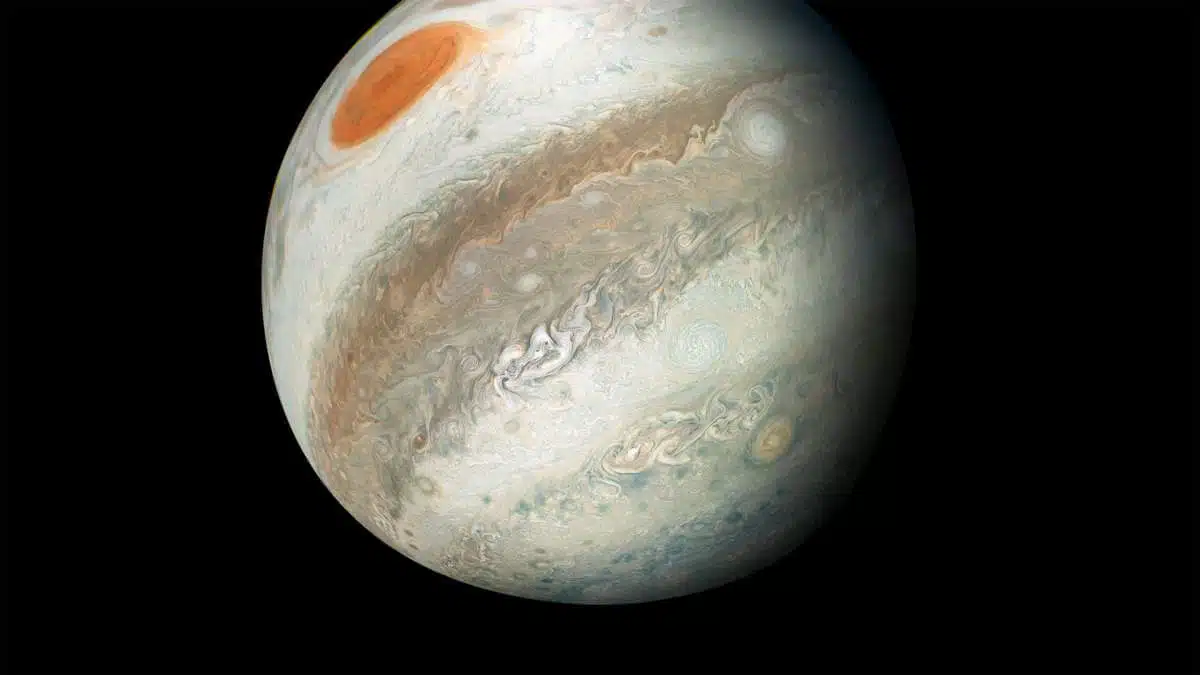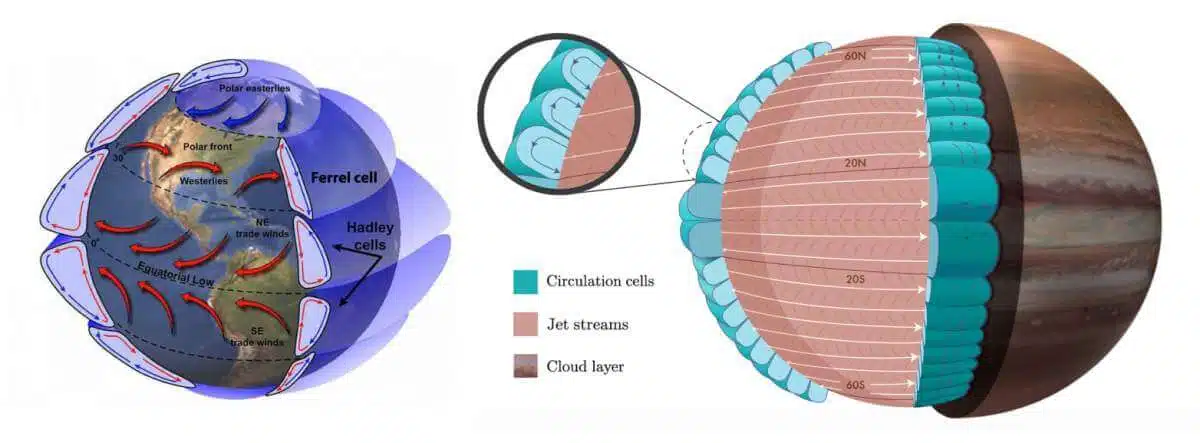Scientists from the Weizmann Institute of Science and their partners on NASA's Juno space mission revealed a series of new findings about the planet Jupiter and found a surprising similarity to Earth
Like the rings of Saturn or the blue color of the Earth, the Great Red Spot of the planet Jupiter is one of the most iconic symbols of our solar system. In a new study published today in the scientific journal Science, Weizmann Institute of Science scientists and their space mission partners reveal Juno of NASA that this giant storm, which was observed for the first time already in the 17th century, reaches a depth of about 500 kilometers below the surface of Jupiter's clouds. This discovery and other findings were revealed this evening inNASA press conference and a series of scientific publications inScience and in other journals.
The Juno probe was launched into space more than a decade ago, and reached its destination - the gravitational orbit of Jupiter - about five years ago. Even before her arrival in Tzedek, the group of Prof. Yohai Caspi from the Department of Earth and Planetary Sciences at the Weizmann Institute of Science to examine the possibility of measuring the mass of the Great Red Spot, which is the size of the Earth. "The experiment we proposed was ambitious - and was not in the original design of Juno, but we came to the conclusion that this measurement is possible and we were looking for a way to perform it in combination with the other measurements performed by the spacecraft", says Prof. Caspi. "For this, the orbit of the spacecraft had to be adjusted so that it would pass over the red spot in the best possible way." The research was based on an innovative method for understanding the internal wind structure of the planet through measurements of the gravity field, which was developed by Prof. Caspi and Dr. Eli Galanti, a faculty scientist in his group. The planning of the complex experiment and its feasibility testing was led by Dr. Marcia Parisi, then a post-doctoral researcher in Prof. Caspi's group, who later moved from Rehovot to NASA's Jet Propulsion Laboratory (JPL) in Southern California.

But space exploration is a long-term business, and now, about seven years after planning began, and after two dedicated forays by the probe around Jupiter (out of 37 forays so far), Prof. Caspi's team has succeeded in revealing the depth and mass of the old storm. "Since it was first seen hundreds of years ago until today, we only knew what the Great Red Spot looked like from the outside," says Dr. Galanti. "For the first time, we have an idea of the depth of the storm and its structure. To illustrate, if it started at the base of the Earth, it would reach the International Space Station."
Tens of kilometers deep
Prof. Caspi's research group is involved in another discovery thatpublished today B-Science. As part of one of Juno's missions, the scientists rotated the spacecraft so that the microwave measuring device scanned laterally for the climatic phenomena that occur below the clouds. This device is sensitive to temperature, and makes it possible to map the heat profile of the atmosphere in six depth layers - from the clouds to 350 kilometers below them. These measurements revealed that even storms much smaller than the Great Red Spot (but still large compared to the hurricanes we know on Earth), go tens of kilometers below the height of Jupiter's clouds.
But this is not the only discovery made with the help of microwave measurements. BAnother article, The members of Prof. Caspi's group studied not a storm or a vortex of one kind or another - but the thermal structure of the entire planet: what happens from pole to pole? The scientists discovered that throughout the range of depths that the device measures, the same thermal signal is received that matches perfectly with the streaks of clouds observed on the surface of the planet. "In addition to the temperature, the microwave measurement shows how cloudy the atmosphere is," says research student Keren Duar, from Prof. Caspi's group. "The turbidity of the atmosphere indicates the concentration of ammonia at that point - the more ammonia there is, the more turbid the atmosphere will be," adds Doer, who led the study together with Nimrod Gabriel, another research student from the group, who explains: "The factor that controls the concentration of ammonia in the different layers is, simply , the direction of the wind: when the wind moves up or down - it drags its faith with it". Ammonia appears in Jupiter's atmosphere as a gas, and when it cools in the outer layers it forms the white clouds that we see in the pictures.
Prof. Caspi and his group members already have shown in the past that the strong jet streams which are responsible for the iconic stripes that adorn Jupiter, reach a depth of about 3,000 kilometers below the surface of the clouds; Each stripe represents an opposite direction of the wind - some stripes move from east to west, and vice versa. The microwave measurement, which showed a high correspondence between the directions of these winds and the concentrations of ammonia at depths of up to 350 kilometers, revealed a surprising aspect of the phenomenon: each jet stream is surrounded by an air flow cell (circulation), similar to the Pearl cells known on Earth and other circulation cells that are responsible, among other things, for bands The deserts in the ±30 latitude zone (for example, the Sahara desert). The main difference is in the number of cells: while on Earth there are two Pearl cells (one in the southern hemisphere and one in the northern), on Jupiter - which is 11 times larger than the Earth - the scientists found 16 such cells. Beyond that, on Earth it is clear where the air flow ends - at the ground. But since the thermal measuring instruments only reach a depth of 350 kilometers, and Jupiter has no land, since it is a gaseous planet, it is still not clear where the circulation ends. "This is the first time we see direct and so clear evidence of circulation cells in a gaseous planet" say Doar and Gabriel. Although scientists do not have direct evidence of the depth at which the circulation cells end, one hypothesis is that the role of the ground on the Earth is taken by the magnetic field, and it is this that causes the cells to close at depth.

These discoveries change our understanding of Jupiter, and the comparison between the flow cells on Earth and those on Jupiter leads to new insights about the climatic dynamics on other gaseous planets. Prof. Caspi concludes: "Since Juno reached Jupiter, we are like archaeologists: only instead of revealing what is happening below the surface, we are discovering what is happening under the cloud cover."
